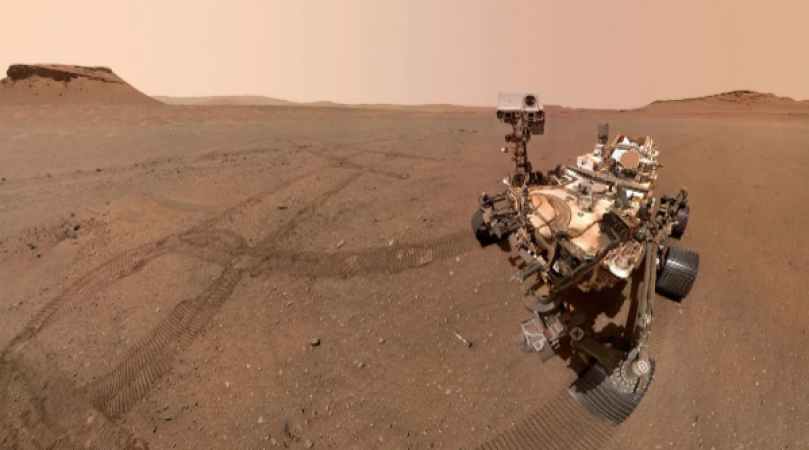
USA: On Mars, the Perseverance Rover, also known as "Percy," recently finished constructing a sample depot. This represents a significant accomplishment for the mission as it is the first time a sample repository of this kind has been built on another planet.
Let's examine these samples in more detail and see how they might reveal information about life on Mars.
Through the Mars Sample Return campaign, NASA and ESA hope to bring samples from Mars to Earth for closer examination.
Also Read: Microsoft Edge will take the place of Internet Explorer
Duplicate samples have been collected by the Perseverance Rover. One set of samples is kept in the rover's belly, and the other set is kept as a reserve collection of samples that might one day be found.
If everything goes according to plan, samples from Mars could be returned as early as 2033. The Sample Retrieval Lander, a NASA lander with a rocket on board, will receive samples from the rover as well as additional specimens that are to be collected throughout the mission. The Earth Return Orbiter, an ESA probe that is orbiting Mars, will receive the samples from the rocket and return them to Earth.
Also Read: Saudi Arabia will soon launch its first female astronaut into orbit
The samples could be taken from the depot if Percy is unable to deliver them directly to the rocket. The sample tubes will then be taken from the depot by two miniature helicopters and brought one by one back to the landing craft. These helicopters, which will be based on the Ingenuity Mars helicopter, will launch aboard the lander in 2028.
Launches of the NASA lander and ESA orbiter are planned for 2027 and 2028, respectively. The Sample Retrieval Lander would be the first spacecraft to ever carry a rocket to another planet and launch it from there. It would land close to or in Jezero Crater on Mars.
The sample depot is located in the "Three Forks" area of Jezero Crater on Mars. The steep, fan-shaped delta is thought to have been created by sediment carried in by a river that entered this crater billions of years ago. This region, which once had a lot of water, may have important clues about any signs of past life on the now-arid Red Planet, according to scientists.
Also Read: How to get the WhatsApp Valentine's Day sticker pack
The samples gathered by Percy may enable researchers to determine whether life has ever existed on Mars. The depot was built by Percy starting on December 21, 2022, and it was finished on January 28, 2023.
The depot consists of 10 sealed titanium sample tubes arranged in a zigzag pattern with a distance of between each tube of approximately 15 to 50 feet to ensure their safe recovery.
Rock core, atmospheric sample, and regolith are the three types of samples in the depot (broken rock and soil). Roubion, Montdenier, Coulettes, Malay, Atsah, Skyland, Bearwallow, Mageik, Amalik, and Crosswind Lake are the names given to the ten samples.
Montdenier, Coulettes, Malay, and Atsah are igneous rocks among the seven rock core specimens, whereas Skyland, Bearwallow, and Mageik are sedimentary rocks.